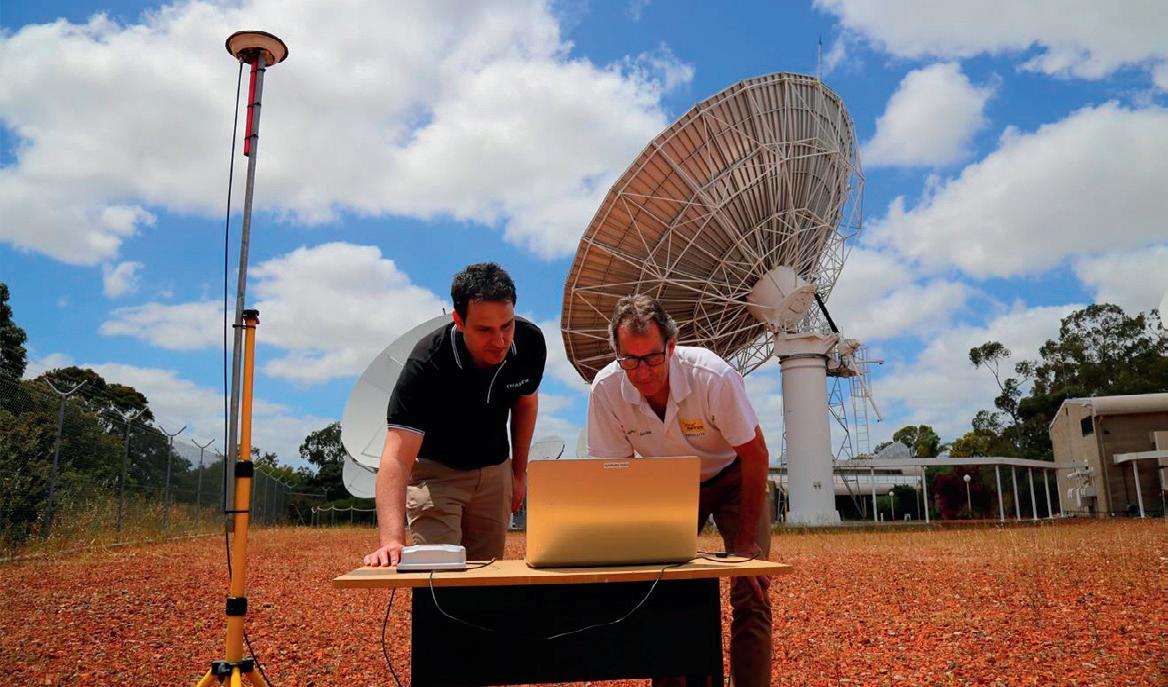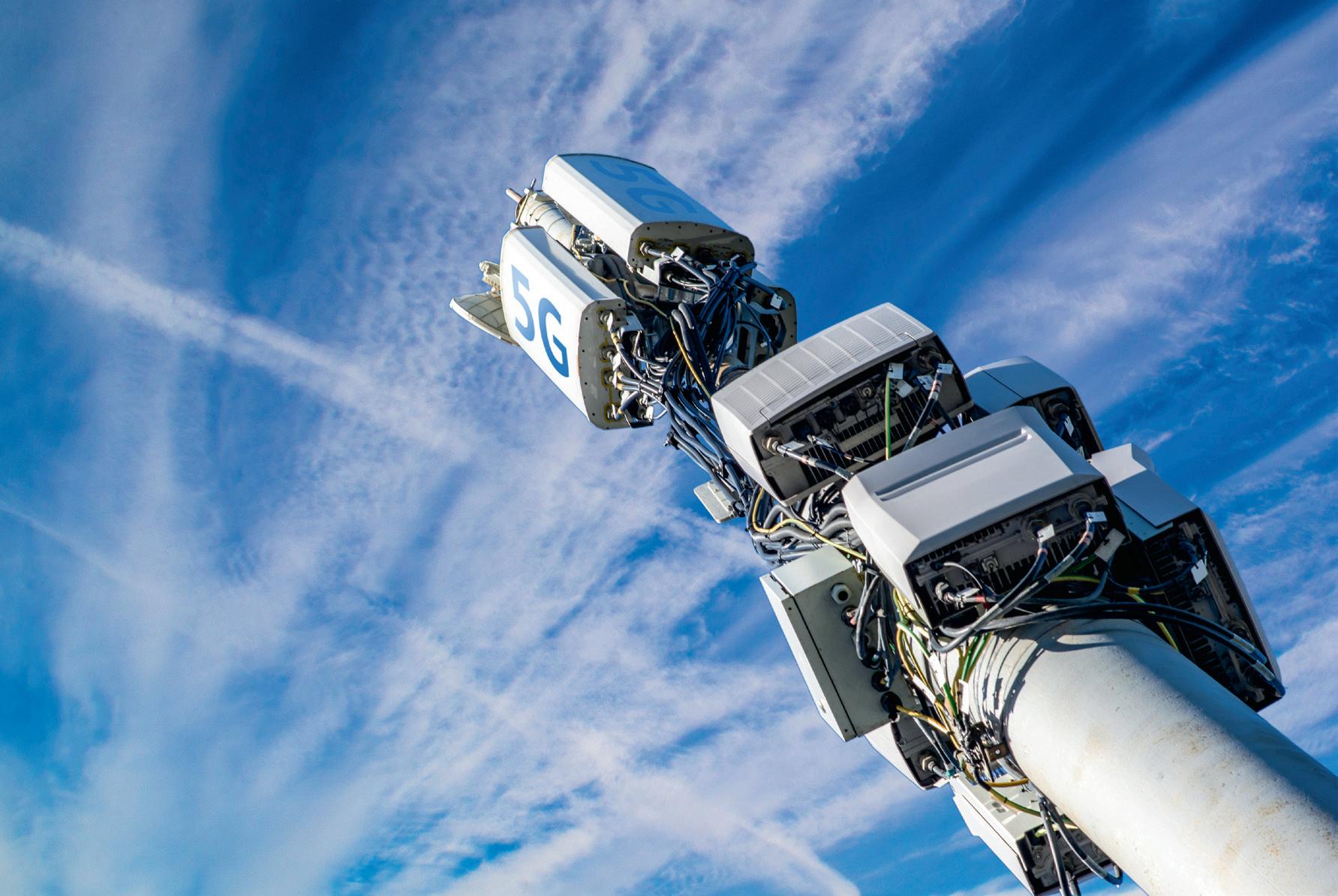
5 minute read
Thales and Optus achieve SBAS milestone
THALES AND OPTUS
ACHIEVE SBAS MILESTONE
The companies have tested technology intended for the enhanced positioning service.
In an important milestone for the delivery of an SBAS for Australia and New Zealand, Thales Australia and Optus Satellite have successfully received a new Thales SBAS signal in Western Australia.
The testing used a Next Generation Thales SBAS technology developed especially for customers close to the equator and others with difficult ionospheric conditions, like Australia and New Zealand.
SBAS and PPP (Precise Point Positioning) will deliver a greatly enhanced positioning service for Australia and New Zealand under the Southern Positioning Augmentation Network being undertaken jointly by the governments of Australia and New Zealand.
In order to test and validate key subsystems for the delivery of early services to the two countries should Thales be selected to supply the Southern Positioning Augmentation Network, the transmission received in WA was generated by Thales Alenia Space using the NIGCOMSAT-1R satellite, currently involved in testing of a Next Generation SBAS solution.
Thales Australia Director Space Matt Dawson said that the company’s team and integrated industrial network extends across multiple continents and demonstrates its ability to deliver system outcomes despite the challenges of COVID-19.
“Thales has been supported in its work by specialist expertise from GPSat Systems based in Melbourne, and by Hexagon | NovAtel, a world-leading GNSS receiver manufacturer,” he said.
“NovAtel engineers that have also been monitoring this new broadcast reported sufficient data to track PRN 147 signals and use them for SBAS corrections.”
Thales Alenia Space VP Navigation Benoit Broudy said that Australia is integral to the global development of Thales’s SBAS and PPP solutions and will benefit from major advances in the technology.
“The current broadcast comes via the NIGCOMSAT-1R satellite that is positioned to serve Africa, so Western Australia is on the very edge of its coverage area,” Broudy said.
“We are offering two new satellite payloads aboard Optus satellites to provide services across Australia and New Zealand, which could be extended into the Pacific Island regions.”
“Receiving this signal through Optus’ Lockridge Earth Station, using Thales’ SBAS technology, is a major milestone and demonstrates what is possible from a world-leading SBAS provider,” added Optus Head of Satellite and Space Systems, Nick Leake.

The benefi ts of smart battery integration

in modular power systems
Complete integration of the power system controller with the batteries’ BMS secures the true benefi ts of lithium technology for critical power systems.
Chris Barson, Eaton Product Manager — PQ/Telecom DC
Critical power systems within the communications, utilities, and mining segments have in the past utilised valve-regulated sealed lead acid (VRLA/SLA) battery technology for power backup. VRLA batteries offer a basic design without any integrated monitoring or control, and are usually controlled by a modular DC power system. Unfortunately, such a lack of self-monitoring and self-management is out of pace with the modern shift towards digital technology.
High maintenance costs an issue
The absence of the built-in intelligence means that for VRLA batteries there is an ongoing requirement for frequent scheduled (and unscheduled) maintenance site visits by knowledgeable expert technicians during the life of the batteries. Monitoring systems are available that can provide added battery visibility compared to a standard power system, but the information gained remains basic. VRLA battery monitoring systems are also typically a separate system to the charger, resulting in a higher starting cost, which results in some users choosing to forego this added component. In any case, the battery monitoring device does not remove the requirement for fi eld technicians to perform scheduled routine maintenance, with its associated costs.
Making battery banks smarter
Nowadays a key technology shift has been occurring with the move to smarter battery systems such as those based on lithium cells. Lithium batteries with built-in multipart battery monitoring systems (BMS) are a key digitisation advancement over VRLA technology, as they not only provide a signifi cantly higher level of monitoring of the battery bank than that which could be achieved with dedicated VRLA monitoring systems, but can also remove the need for periodic battery maintenance entirely. The built-in BMS fi tted within most telco-grade lithium systems are highly sophisticated and can self-manage most aspects of the charging and discharging functions — down to the single cell level — providing balancing that was traditionally unavailable to VRLA batteries.
Integration is key
Many modular DC critical power systems and lithium batteries as offered as separate components of an ‘intelligent’ and ‘integrated’ solution. However, despite obtaining some benefi t from such a solution with a quality lithium battery, multiple essential capabilities of the solution are simply unused and unavailable when designed in this way. To secure the true benefi t of lithium technology within a critical power system, a comprehensive integration of the communication between the power system and the battery’s internal BMS units must be provided. Without full integration, many requirements of a truly reliable critical power system cannot be achieved — such as accurate and functional control of system features like battery current limiting, multi-stage charging, intelligent generator start/stop control, and peak load reduction, for example.
Greater safety
As is the case for most companies today, the focus on technology is important, but providing a safe working environment for employees is also paramount. Batteries are a frequent point of concern for OHS teams, as VRLA batteries are permanently energised and present a risk to personnel and equipment during transit, installation and maintenance. Despite the likelihood of accidents being low, they remain a concern to many who are looking for ways to minimise the potential for harm. Reputable 48 VDC long-life telco-grade lithium iron phosphate (LiFePO4/LFP) batteries will typically allow for de-energisation of battery terminals either manually by the user, or automatically via the in-built BMS if a protection event occurs, such as short circuit. LFP battery technology typically also emits no gases — unlike VRLA batteries which emit hydrogen — and have an internal chemistry that includes no toxic or hazardous materials. Even in worst-case scenarios LFP batteries are virtually incombustible.
True integration lowers TCO
Properly engineered critical power systems — with true integration of components — remain at the heart of achieving the essential functional capability and the lowest total cost of ownership (TCO). Installing non-integrated smart devices together does not make a smart solution; it instead adds to TCO with unnecessary site visits, reduced functional capability and reduced remote visibility. Users should not accept anything less than a truly integrated solution.









